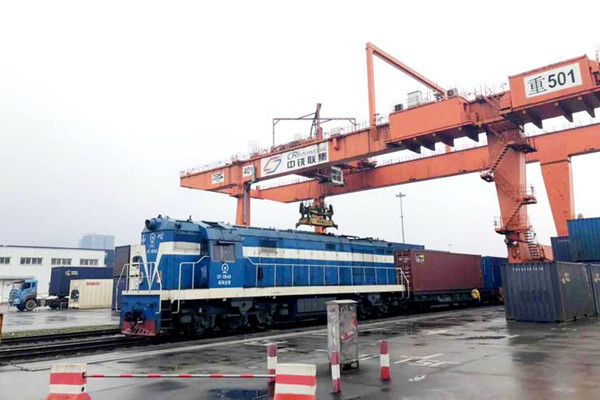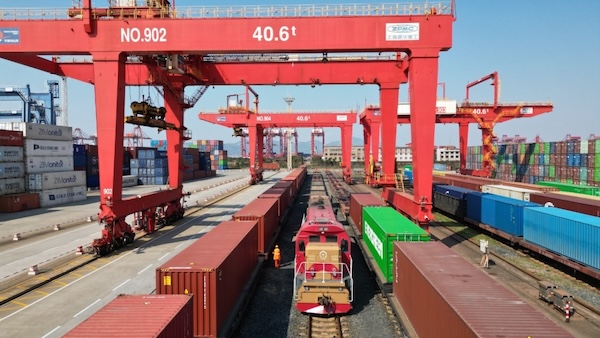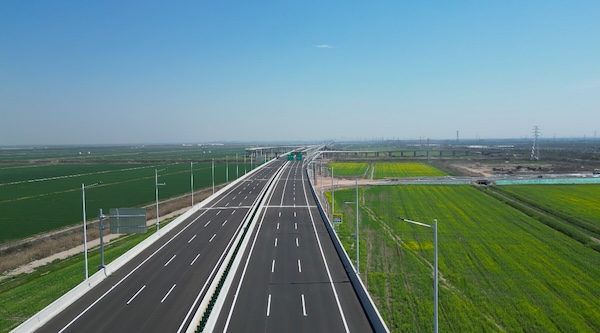Rail-sea intermodal transport flourishes in Ningbo-Zhoushan Port

Ningbo-Zhoushan Port's first batch of cargo heading to Germany leaves Chongqing on Jan 14 from the city's railway container distribution center. [Photo/zj.zjol.com]
Ningbo-Zhoushan Port witnessed a surge in rail-sea intermodal transport in the first quarter of the year, local media reported on April 17.
Statistics show that the port handled nearly 6.7 million twenty-foot equivalent units (TEUs) of containers during the period, up 3 percent year on year, among which, 175,000 TEUs were transported via a combination of rail and sea, up 45.4 percent from a year earlier.
Much higher was the growth of the port's rail-sea intermodal transport in Jiangxi province, which hit a record high year-on-year increase of 58.9 percent.
Rail-sea intermodal transport has become an important means of transporting cargo around the world due to its speed, safety, high capacity and low cost.
Ningbo-Zhoushan Port has been developing such transport in order to better facilitate international cargo logistics. It handled its first batch of cargo to Germany via its Chongqing-Ningbo cargo train route and the Chongqing-Sinkiang-Europe International Railway in January.
It also opened a cargo train route to Xi'an in March, which connects with the city's Chang'an train route to Central Europe, thus enabling cargo to be transported easily from Ningbo and its surrounding areas to Central European countries, and vice versa.
The port has so far opened 13 cargo train routes dedicated to rail-sea intermodal transport.

 Ningbo seabird project seeks international volunteers
Ningbo seabird project seeks international volunteers  Jakub's journey: From shipyard to sea
Jakub's journey: From shipyard to sea  Badminton Asia COO applauds Ningbo
Badminton Asia COO applauds Ningbo 


